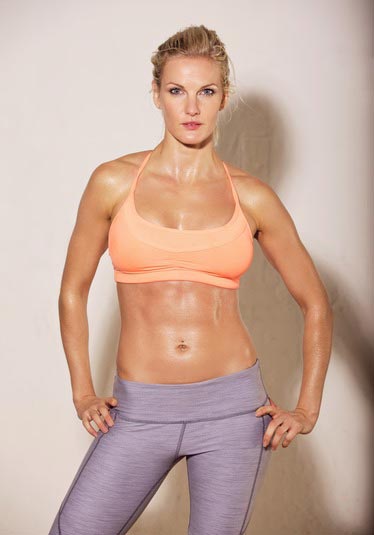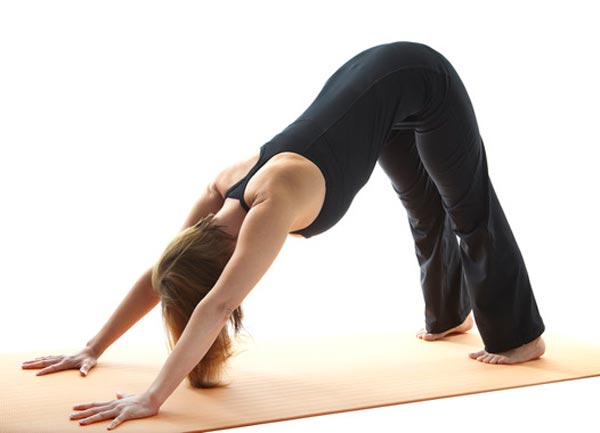 After many years of doing regular Hatha and Ashtanga yoga, I noticed a Hot Yoga Studio had opened in my area and decided to give it a try. I wasn’t actually sure what it was to be honest. Is Hot Yoga basically Bikram but with a different name? I hoped not, because the one Bikram class I tried years ago, was so very hot I thought I was going to pass out. One thing I do know however, is that people who take up Bikram get very addicted to it.
After many years of doing regular Hatha and Ashtanga yoga, I noticed a Hot Yoga Studio had opened in my area and decided to give it a try. I wasn’t actually sure what it was to be honest. Is Hot Yoga basically Bikram but with a different name? I hoped not, because the one Bikram class I tried years ago, was so very hot I thought I was going to pass out. One thing I do know however, is that people who take up Bikram get very addicted to it.
So off I went to my Hot Yoga class and found it suited me very well. It was hot, oh yes, and I sweated like I’d never sweated before, but it wasn’t nearly as hot as Bikram. It was a sequence of lovely flowing postures that changes a bit with every teacher and with every class. The reason it suited me at that particular time (and I’ve stuck with it) is that I’d been suffering from joint pain and it was beginning to impact on my ability to do my regular classes. I found that, without injuring myself, the heat in the Hot Yoga class was loosening up my joints nicely and I was able to fully engage in all the postures. Also, I rather liked sweating like that. As Scandinavians have always known, there’s nothing like a good sweat to detoxify and feel good.
I also began to see why Bikram (and clearly Hot Yoga too) could be so addictive. According to Howard Napper (the yoga and life style expert who features on my Anti-Aging Yoga DVD) the heat causes more endorphins to be released than in normal exercise so you get quite a high from it. However, it’s important to know that this huge surge of endorphins means you need to take it easy after a class. Run around in a frantic and stressed way, and this endorphin release could work against you.
Another important thing to know is that’s very important to hydrate yourself before a class. It’s ok to sip through the class, but it’s much more beneficial to drink a good amount before. I myself, barely drink at all through a class. I then make sure I drink plenty of water at stages through the day. As has been explained previously on this site (refer to articles under Diets), sipping continually throughout the day is not the best thing.
So what is the real difference between Bikram and Hot Yoga? And which one is better for you? I asked yoga teacher Cal Wansbrough to spell it out for us.
NOTE: Bikram has been patented by it’s founder Bikram Choudhury and he won’t allow any scientific research to be done on it. He makes various health claims that the compression postures are good for the adrenals, joints, digestive system, thyroid etc (which could be claimed of all yoga) but nothing has been verified by science. It’s also worth noting that because Bikram heats the body up very quickly, for anyone with a compromised detoxification system (a DNA health test would be needed to diagnose this but it’s not uncommon) this rapid heating could be dangerous. This makes the gentler heat of Hot Yoga safer in this respect.
A lot of people think Bikram and Hot Power Yoga are the same thing.
Both are yoga, both are done in a heated room. How different can they be?
Well, the temperature for a start. Bikram is in a much hotter room, 40 degrees C with 60 % humidity.
Hot Power Yoga is in a room varying between 32 degrees and 34, with humidity in a range of 35%.
Bikram; you know exactly what you are going to get; 90 minutes of serious sweating, 26 postures, 2 breathing exercises, 2 two minute sivasana (the final resting pose). There is a set script so every teacher says pretty much the same thing and thus, there is neither variation in the poses, sequence, script, or even the surroundings. (there are fairly strict brand guidelines to how a studio should look). Because of the heat, it’s intense, sometimes intimidating, however, you can measure your progression (since each class is so similar) and again, because of the heat you can probably stretch further than you have ever done before. There is a comforting consistency and expectation to every class. There is no flow or vinyasa between the asansas (postures) and this, perhaps, makes it slower and less physically strenuous than Hot Power Yoga. On the downside, some people get bored with no variations within the practice.
Hot Power Yoga: a series of postures linked together through flowing movement (called vinyasa). Classes come in convenient 60 to 90 minutes lots. There is a definite structure to the sequence of poses, but the teacher will vary them and offer variations in each class. Also the teacher has a free reign and can speak to alignment, anatomy, spirituality, emotions, energy, whichever takes his / her fancy. Thus the classes are varied, possibly more personal and arguably more creative. However these variations make the quality of the class more dependant on the quality of the teacher. The lack of imposed consistency means you might take a class which is not what you expected and not what you came for. Hot Power Yoga is arguably more strenuous on the body since you are constantly moving, and the beginning part of the class, which include Sun Salutation postures A and B, is fairly cardio vascular and you create a good internal heat.
In Hot Power Yoga you ‘flow’ and hold poses, usually for 5 breaths,
Bikram is more static, holding the poses for up to 40 seconds, and there is no ‘linking’ movements.
One thing to note too, Bikram Choudhury created Bikram Yoga back in the 1970s and controversially managed to patent it. With Hot Power Yoga, there are a number of teachers who have put their name to it and it is not patented.
 Both have their merits and their pitfalls; all yoga moves energy or prana round the body, thus after a class you often experience a sense of lightness and well-being. With both styles you would have stretched and strengthened muscles, increasing both flexibility, stamina and balance. The physical benefits are numerous, but people get hooked more because of the mental aspect; yoga helps you to focus, it improves sleep, it lessens stress, it connects mind and body, it brings you in to balance.
Both have their merits and their pitfalls; all yoga moves energy or prana round the body, thus after a class you often experience a sense of lightness and well-being. With both styles you would have stretched and strengthened muscles, increasing both flexibility, stamina and balance. The physical benefits are numerous, but people get hooked more because of the mental aspect; yoga helps you to focus, it improves sleep, it lessens stress, it connects mind and body, it brings you in to balance.
Bikram and Hot Power Yoga have had a substantial amount of publicity because they can promote weight loss and build incredible abs…. the heat, which is more extreme in Bikram causes the body to sweat profusely and thus weight loss is primarily due to water depletion. Practicising yoga in heated rooms is a controversial topic, it claims to detoxify the body, however the liver and kidneys are the primary organs associated with detoxification and toxins are released though urine above sweat.
Like all forms of exercise, there is possibility of injury; most common yoga injuries are lower back pain, tearing of hamstrings, knee (due to lack of flexibility in the hips) and rotator cuff. The latter is much more prevalent in (Hot) Power Yoga, where the chatarangas (high to low plank) often means the student inadvertently loads in to the fragile shoulder joint. Knee injuries seem to be more common with Bikram where the instructor will advise to ‘lock’ the knee joint, causing the quadriceps to engage, but this can, and is exacerbated in the heat, cause overstretching to the knee ligaments. In both styles, the heat improves flexibility as the muscles expand quickly and thus practitioners can stretch a lot further, and sometimes beyond the safety zone.
The intensity of both Hot Power Yoga and Bikram tends to attract type A personalities, who are naturally competitive and often come to these types of yoga in search of a work out and to push their body to extremes. With this mental attitude, plus at times the encouragement from the teacher to ‘go beyond your comfort zone’ and ‘play with your edge’ can lead to injuries. The greatest lesson for us in our Yoga practice is not to become fixated in mastering a pose; asana is meant to be therapeutic, not to challenge our pride. Some poses may be uncomfortable but result in a healthy response, but other poses might just be bad for you. Everyone’s anatomy and history are unique, and this means that each pose affects each person differently.
Without a shadow of a doubt the benefits and the feel good factor of both Bikram and Hot Power Yoga outweigh the bad. The more you practice, the more the body adapts, the more you begin to see both physical and mental changes. Yoga is not about winding yourself in to a pretzel, it’s a journey to discover yourself, your weaknesses and your strengths,and the the most difficult lesson to us all, to accept ourselves.
Cal Wansbrough
Power Yoga and Yin Yoga Teacher

Comments 3
that was really interesting. I never knew that heat helped the stretching.
Pilates is very local and easy for me to access and has made a huge difference to my balance and flexibility. I really must give your DVD another outing and see where I go from there
Very interesting article, thank you! And it got me back into my yoga groove 🙂 So having done Bikram in the past I decided to try out hot yoga and was really quite surprised at how different I found it, especially the heat factor. Have tried a few classes now, with different teachers and love how varied they are and how afterwards, my whole body feels like it’s had such a good workout. Feels great! Think I might even brave Bikram again!
I had done one yoga class some 10 years ago as part of a dancer’s program and hated every second of it, feeling what Cal refers to as “winding yourself into a pretzel”!! Tried it again years later through your DVD ,and then ended up in a Bikram class! Well.Heat!!!!!.But after surviving the 1st class (and much to my surprise loving it) I found the benefits of Bikram amazing! I do love the fact that it’s always the same class, it allows (me) to try to really feel everything that’s happening with each posture and get deeper everytime. I also love the new “feelings” it brings to be working out in such a challenging heat.Then I tried hot yoga, and being from a hotter part of the world and working in a generally pretty hot studio for half the year, I felt more like in a “normal” yoga class. Anyway I’m here to praise the benefits of yoga on body and mind, and feel grateful that you brought it out, because my body is my work tool and it needed that extra strength! So.Thank you for the info and advice;-)